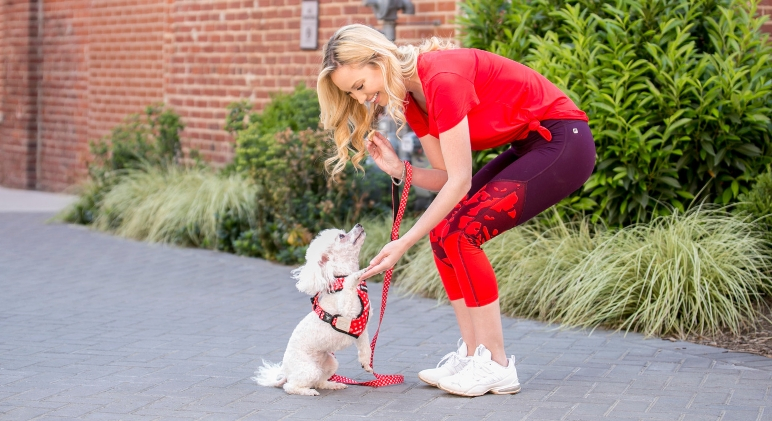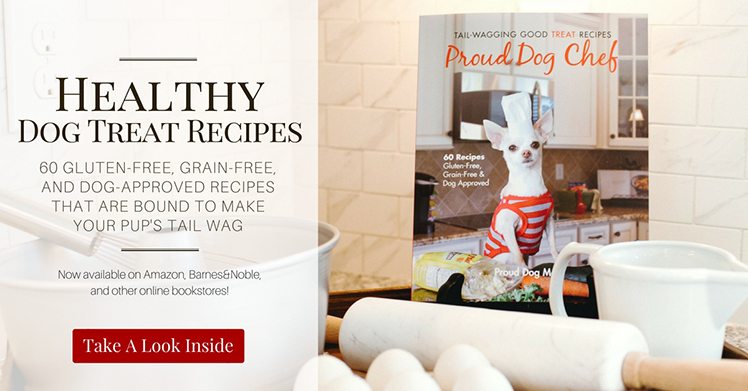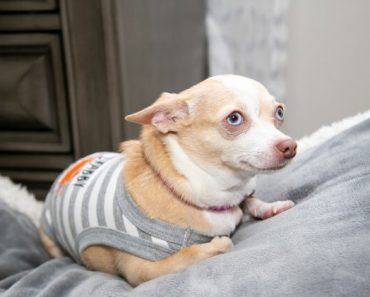When people first bring home a new puppy, they can get pretty wrapped up in all the cuteness, cuddling, and playtime. I’ve been there! But, one of the best things you can do for your pup is to carve out 10 to 15-minutes each morning and evening to work on training basic commands. This little amount of time makes a huge difference, and, trust me, being able to communicate with your pooch is life-changing.
An Important Training Tip
Before we dive into step-by-step training tips, it’s important to note: When training a dog, consistency is key. So, make sure everyone in your household is on board with the same house rules. For example, if mom allows dogs on the couch then Fido will be really confused if dad gets mad when he’s chillin’ on the couch. Also, watch your wording for commands. If you usually tell your dog Come but suddenly tell him to Get Over Here then he isn’t going to understand what you want.
Throughout the training process, be patient with your furkid, as every dog learns at a different pace.
Commands To Teach Your Puppy
1. Sit
This is usually the first command people teach their young puppies. While it seems pretty basic, it’s actually very important for young Fido to master. Sit can help settle down your dog when needed. Plus, it plays an important role in managing unwanted behaviors, as a dog can’t jump on people, steal food from the table, or chase after something while sitting.
- Start by holding a training treat close to your dog’s nose. Once he gets a good whiff and shows interest in the treat, slowly move your treat-filled hand upward. Your dog’s snout should stay glued to your hand, as if the two are magnets. By raising your hand, this should cause your dog to tilt his head up and his bottom should lower to the ground. Once your pup’s booty touches the ground (not just hovering, but actually touching), immediately give a reward marker (either click the clicker or say a verbal marker, like “Yes!” in an upbeat tone) and offer the treat. Follow up the treat with praise and petting. Keep in mind: You shouldn’t need to press your dog’s tush to the floor. Let it come naturally. Repeat this process several times, until your dog begins sitting at the sight of the treat moving above his nose.
- Once your dog gets the hang of things, add in the cue word. While holding the treat, say the word “Sit” as you begin lifting your hand. Again, once your dog’s bottom touches the ground, give the reward marker, treat, and praise.
- The next step is to repeat the same process with an empty hand. As you cue your dog to Sit, I recommend pinching your fingers together (as if you’re holding a treat) and doing a similar hand motion (like a scooping-up action). Once your dog’s bottom hits the ground, give the reward marker and offer a treat (one you were hiding in your other hand).
- Once your dog is mastering the Sit command in a quiet room, change up the location. Practice in other rooms and eventually outdoors. This will naturally increase the number of distractions present, but that’s a good thing. Ultimately, you want your dog to listen to your Sit command despite their surroundings.

2. Stay
Teaching your dog to Stay in one place until he’s given a release command is one of the most important things you can do. Not only will you use this cue to raise a well-mannered canine kid who develops patience and self-control, but it’s also a life-saver in dangerous situations.
- Standing directly in front of your puppy, show him a treat and direct him into the Sit position. Once sitting, tell him to Stay. Wait just a couple seconds and then say a release cue (like “Okay”) and offer a treat. Practice this several times, gradually increasing how much time you make your dog wait before offering the treat.
- Now it’s time to add distance. Once again, show your dog a treat and direct him into the Sit position. Still holding the treat in front of your dog, tell him to Stay. Then, take one small step back. After just a few seconds, step back in, closer to your dog, give the release cue, and offer a treat and praise. Repeat this step, gradually increasing the number of steps you take each time.

3. Come
A recall – coming when called – is another potentially life-saving command. Chances are, you’ll accidentally drop your puppy’s leash or leave the front door open at some point in your dog’s life. If your dog comes when called, it will help keep him out of trouble.
- First, pick your reward. If your puppy is food motivated then this may be a high-value treat. If your puppy prefers playtime then your reward may be a squeaky toy.
- Once you have your reward in hand, bring your puppy into a quiet, distraction-free room. Back away from your puppy, leaving a little space in between the two of you. With the treat or toy in one hand, extend it toward your dog and wiggle the reward. In an excited and inviting tone, invite your puppy to Come. When he comes to you, offer the treat or toy, along with lots of praise. Repeat this several times, gradually increasing the distance between you and your puppy.
- As your puppy gets comfortable with the Come command, begin practicing in an environment with greater distractions. Whether you’re in a room with other people or in your backyard, practice with your puppy on a leash. That way, if he doesn’t listen and come when called, you can gently tug on the leash to get his attention.

4. Leave It
Teaching your dog the Leave It command may help prevent your pup from biting into and ingesting something toxic. Teach this command in steps.
Step 1:
- You’ll need two different types of treats: A high-value treat that your dog goes nuts for and a lower-value treat. Make sure to break the treats into tiny pieces so it won’t take your puppy long to gobble away.
- Put one type of treat in each hand.
- Place the hand holding the high-value treat behind your back. With your other hand (the one holding the lower-value treat), make a fist and extend it toward your puppy. Let him attempt to get the treat. Your puppy will likely sniff, lick, and maybe even paws at your hand.
- When your puppy naturally pulls away, say, “Leave It” and then offer the higher value treat.
- Repeat that process until your puppy immediately stops sniffing your hand when you say, “Leave It.”
Step 2:
- Once your dog seems to have a basic understanding of the Leave It command, repeat the process above with an open hand (instead of a closed fist). So, with the lower-value treat resting in your palm, extend your hand toward your puppy. Say, “Leave It.”
- If your puppy actually leaves the treat alone, without attempting to snatch it out of your palm, offer the higher value treat. If your puppy does attempt to snatch the treat from your palm, quickly lift your hand up and give a no-reward marker (i.e. something like “eh-eh”). Give your puppy a few seconds to relax before lowering your hand for another attempt.
- Repeat that process until your puppy routinely follows the Leave It command.
Step 3:
- Instruct your dog to Sit.
- If you have a small dog, place the lower-value treat on the floor a short distance in front of him. If you have a large dog, place the treat on a chair a short distance in front of him.
- As your hand releases the treat, say, “Leave It.” If your dog attempts to take the treat, take it away and give your no-reward marker, such as “eh-eh.” Wait a few seconds for your dog to calm down and repeat. Do this until your dog leaves the treat alone. At first, you’re looking for your puppy to leave the treat alone for just 5 to 10 seconds. If he does that, offer the high-value reward. Each time you repeat this step, increase the time the treat sits on the floor or chair.

Happy Training!









I need help! I have 2 Poms that had a long hard beginning to life and I went to rescue one and ended up bringing 2 siblings home… Boy and girl. I have spent money and time with trainers and Vets and zero luck on any help potty training. Desperately looking for sound advice.
Thank you.
Hi Beth! I love that you are giving these two little Poms a second chance at life. Good luck with them 🙂 As far as the potty training goes, check out this article (it may help you): https://www.prouddogmom.com/how-to-potty-train-your-puppy/